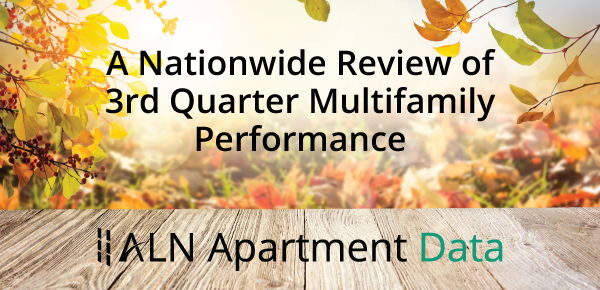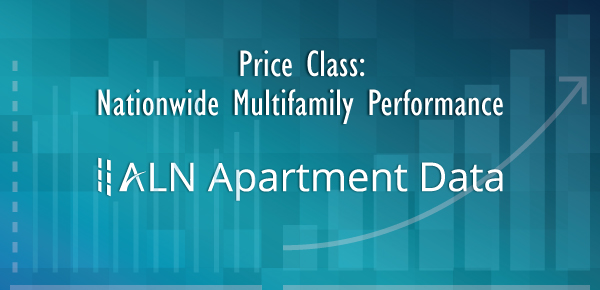Price Class Performance Nationwide
This month we review the year-over-year nationwide performance of the ALN price classes for conventional properties – a period from October 2018 through October 2019.

This month we review the year-over-year nationwide performance of the ALN price classes for conventional properties – a period from October 2018 through October 2019.

It’s hard to believe that the 2019 NAA Apartmentalize is already behind us! Click on through to read about our experience in Denver for the week.

One way to evaluate multifamily performance is to look at the usual metrics through the lens of price class rather than just by geography. This month let’s consider the year-over-year nationwide performance of the ALN price classes—a period from April 2018 through April 2019.
Almost unbelievably, another year is gone. This month we’ll be looking at how multifamily performed for the year, a region at a time. Unless stated otherwise throughout this review, all numbers will refer to conventional units. Let’s jump in!

Throughout the last few months we’ve analyzed multifamily performance by market size, by price class and over different spans of time. This month, we look at year-over-year performance between nationwide conventional properties and stabilized-only conventional properties.

Market performance showed no signs of an aged cycle in the third quarter. The flood of new units continued unabated in markets across the country, with about 60,000 new units delivered in the quarter. What has changed recently compared to late 2017 and early in 2018 is demand.

One of the ways to evaluate multifamily performance is to look at the usual metrics through the lens of price class rather than just by geography. This month, let’s consider the year-over-year nationwide performance of the ALN price classes—a period from July 2017 through July 2018.

2018 is over halfway done, meaning it’s time to get a pulse on the state of the multifamily markets and regions throughout the United States.

Now that the numbers are in for the first quarter of 2018, it’s a good time to look back and assess the multifamily industry’s performance. We’ve been seeing signs of an overloaded construction pipeline for several quarters now, and the story hasn’t changed so far.